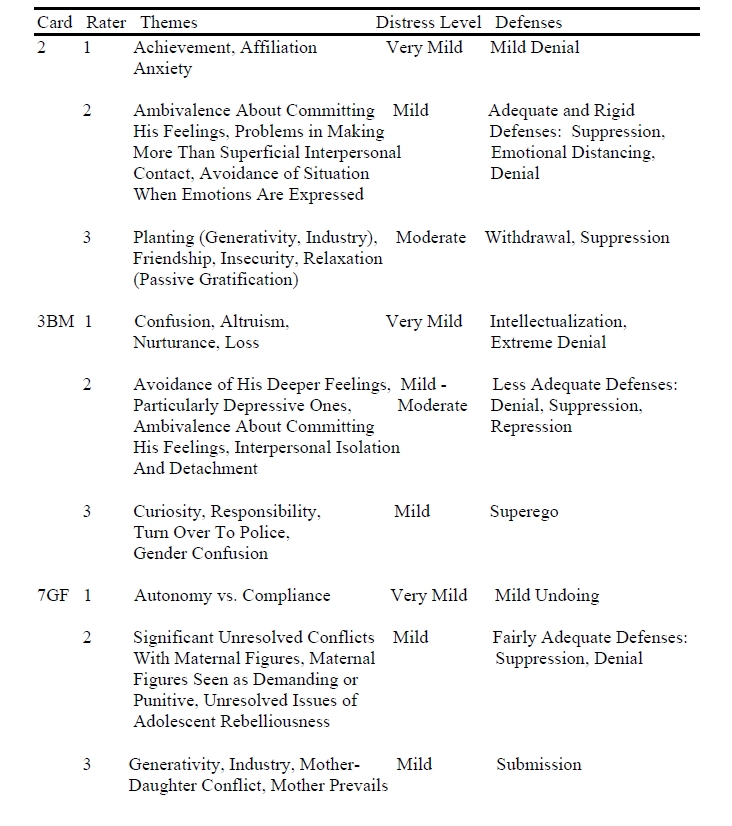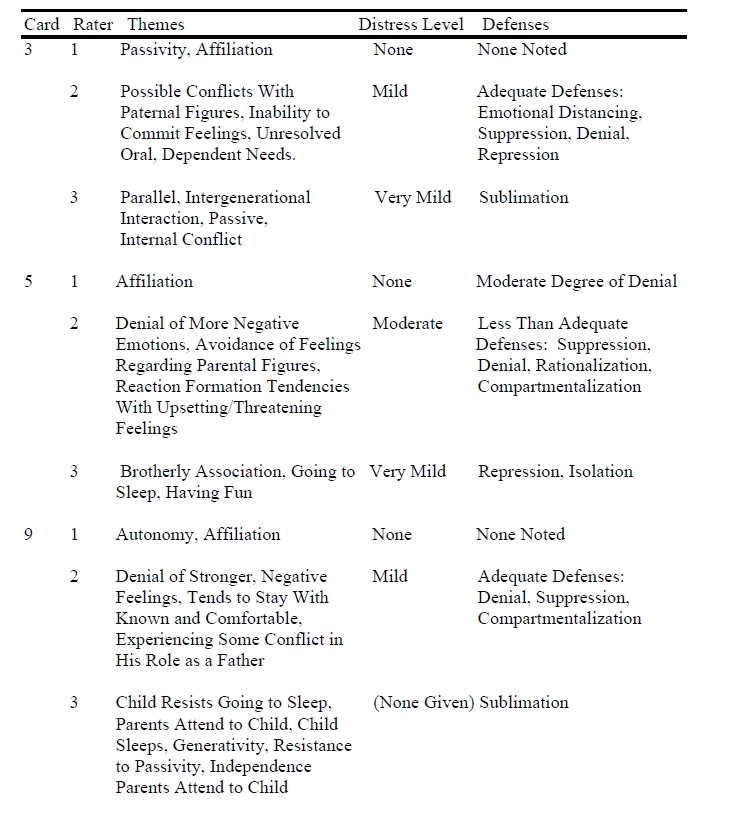This article is part of a larger work.
Return to the table of contents | Go to the next section
Participant Four: Peter
Background Information
Demographic Information. Peter, a thirty-three year old, Euro-American male, participated in the present investigation. He works as an advertising researcher and has been married to his wife, Laura, for six years. Peter and Laura lost their daughter, Tabitha, four months ago, when she was three days old. They have one living daughter, Meredith, who is three years old.
Recruitment Process. Peter was recruited into this study after this investigator approached him at a perinatal loss support group meeting. During the telephone screen, he expressed interest in participating in this investigation, and asked several questions about this researcher’s graduate school program. After ensuring that he met the criteria for this study, the researcher scheduled the first meeting.
Description of the Loss. Peter’s daughter, Tabitha, died when she was three days old after having been born premature. When his wife was twenty-six weeks pregnant, she developed a life-threatening condition that could only be cured by delivering Tabitha. Although Peter knew that Tabitha might not survive after being born at such a young age, his first priority was to “get my wife healthy.” Laura delivered Tabitha by having an emergency C-section. Three days later, Tabitha developed bleeding on the brain, and she died.
The Interview
Peter’s interview occurred in two sessions, each six days apart. His first meeting lasted one hour, while his second lasted forty-five minutes. Peter was cooperative, yet reserved throughout both interviews. When he was asked more open-ended questions, he became uncomfortable, requesting that the interviewer be more specific. Often, when he did give answers, he gave only brief descriptions of events and feelings, resulting in interviews that were significantly shorter than those with other participants. Due to this briefness, his interview summary is shorter than that of the other participants.
The following several sections summarize Peter’s interview, describing his desire for children, his experience of Laura’s pregnancy, his initial reactions to the loss, and his reactions for the first four months to the present. Later, sections that summarize his PGS scores and his projective test results will be presented.
Desire for Children. Unlike the other participants, Peter gave only a very brief description about his desire for children. He stated that he had always wanted to have children, and that as a child, he “. . . knew that I would have children some day.” In addition, he talked about how he and Laura had planned for a long time to have their second child, Tabitha.
Peter’s Experiences During the Pregnancy. Peter described Laura’s pregnancy with Tabitha as a positive experience. He felt extremely excited when he first found out about her pregnancy, as it had taken several months for her to conceive. Peter enjoyed bonding with Tabitha during this time. He attended all of her ultrasound scan appointments, and often felt her heartbeat. He described these bonding experiences as “pretty phenomenal and amazing.”
When Peter first learned that Laura had a life-threatening condition and that she had to deliver Tabitha early to get healthy, he became extremely concerned, and focused primarily on Laura’s well-being. He stated, “It was more like the baby came second to make sure that my wife was healthy.” Although his primary concern was about Laura’s health, he was also worried about whether Tabitha would survive because she was born so premature. Peter describes his experience in the following narrative:
At that point, what they told us was that chances are slim, but not impossible. And then from there, it was day by day, minute by minute, made it another hour, made it another two hours, made it a day. And then after three days, she developed bleeding. At that point, the chance of survival was nothing.
Initial Responses to Tabitha’s Death. When Peter first learned that Tabitha had died, he felt extremely “disappointed” because he had been planning for this baby for a long time, had been through the pregnancy, and now did not have a baby. He repeatedly intellectually described this initial feeling as “disappointment,” rather than expressing emotions. In the following narrative, Peter elaborates:
It was, you know, more disappointing because of the time it takes to get pregnant, and the time we had to wait, and then twenty-six weeks later, which is six months or something like that, you go through a pretty extended process to get to that point, and then, you don’t get the result. And that’s probably the hardest part of it. Wait for a long time and then you don’t get what you’re expecting. You know, if it was like a two-week process, I’d be like, “Well okay, we’ll start again and in two weeks later we’ll get to that point.” But not with this process. You know, it’s like a nine-month process. The difficult part is you wait a long time and that it doesn’t happen.
To further illustrate, he stated:
A year ago or so we decided that we were going to have another child and then we went through the process. The long ride up the hill and a quick ride down. I think looking forward to it, anticipation is building, and you know it’s a quick ride down the hill and so I think that, you know, it happened after all this waiting and anticipation, and all of the planning, then it didn’t happen.
Peter believes that knowing that Tabitha’s chance of survival at twenty-six weeks was slim may have buffered his reaction to her death. During the interview, he stated that losing her “maybe wasn’t quite as difficult” as it could have been if he had not been forewarned.
First Four Months After the Loss to the Present. Since Tabitha’s death, Peter’s most prominent emotions have been guilt, anger, and sadness. He talked at length about his guilt, which came in the form of regret over not investigating Laura’s medical condition more thoroughly to learn if there was any other cure besides early delivery. During the interview, he mentioned repeatedly that he regretted “not doing more” to learn about her medical condition. Interestingly, each time he discussed his regrets, he added a qualifying statement about how he could not be accountable for Tabitha’s death. Peter’s anger was directed primarily at the doctors, who he felt may have been able to do something sooner or quicker to prevent Laura from having to deliver Tabitha so early.
He also reported that he felt angry at “the fact” that Tabitha had died. Peter reported feeling little sadness. Furthermore, this emotion came in the form of disappointment that he was expecting and planning for a baby, and did not receive one.
One of Peter’s most prominent themes was that he hid his feelings and avoided thinking about Tabitha’s death, despite all of his emotional reactions described above. During the interview, he stated repeatedly, “I’m not going to sit and think about it again and again and again. That doesn’t help me - just to sit there and think about it.” Similar to the other participants, Peter described hiding his feelings from others, frequently saying, “I feel no need to display my emotions.”
Another one of Peter’s most central themes was that of prevention. He reported that he chose to focus on educating himself about Laura’s medical condition to prevent another loss from occurring, rather than thinking about Tabitha’s death. The following narrative illustrates this focus:
I’m more concerned with possibly how to prevent it rather than on dwelling on that it happened. I mean, still, as I put it, it sucks that it happened. But you know, we’re analyzing it from the standpoint, “Okay, what could we have done different?” You know, you can go through the shoulda, coulda, woulda, and beat yourself up for doing that, but, you know, we can’t change anything. All we can say is, “Okay, well, we can look at this or monitor this, or, you know, be more in tuned to this, or be even more in tune about the process” and try to work something out there.
Peter asserted that, since his loss, he reflects on his values more and appreciates what he has more. He feels that knowing that he already has a child, and that he has another opportunity to have one, has given him some perspective on Tabitha’s death.
Peter and Laura plan on trying to have another baby. Although he finds comfort in the hope that he may have another child, he also feels anxious about Laura’s being pregnant again. Peter expressed anxiety over future pregnancies. To illustrate, he stated:
You know, you never know what is going to happen again. I mean we have had both sides of them. I mean we have had a successful pregnancy and an unsuccessful pregnancy. And, to an extent, there is no real middle ground. You can’t be partially pregnant. You know, I guess there’s some nervousness that this isn’t going to be successful.
Peter reported that little has changed in his relationship with Laura since Tabitha’s death. He said that she is now slightly less emotionally and physically available, often feeling tired and just wanting to “hang out” on the couch. She has mood fluctuations, and Peter chooses to “. . . go along with the mood she creates.”
One of Peter’s greatest sources of comfort is in receiving quite a bit of support from his friends and family, which he has found helpful in coping with the loss. He reported that he felt fortunate to have “a good supportive family” that lives close by. The Perinatal Grief Scale
Peter completed the PGS during the beginning of the first meeting. His scores were then computed and compared to the means and standard deviations of the PGS. These means and standard deviations were found in the validation study of this instrument (Potvin, Lasker, and Toedter’s,1989). Peter’s total score was 66, indicating that his grief was approximately one standard deviation below the mean (see Table XI). His score for the Active Grief subscale was 22, indicating that his “active” or “normal" grief is approximately 2.6 standard deviations below the mean. On the Difficulty Coping subscale, Peter scored a 21, which is approximately .6 standard deviation below the mean. On the Despair subscale, he scored a 23, which is about .01 standard deviation below the mean. Essentially, Peter scored below the mean on all of the subscales, suggesting that his grief scores were below average.
Table XI.


The reference group scores were taken from Potvin, Lasker, and Toedter’s (1989) validation study.
The following pages contain two tables of the results of the rater’s responses to the T.A.T. and the C.A.T.-H. Table twelve illustrates the results of the T.A.T.; table thirteen, the C.A.T.-H. These tables list each rater’s description of the themes, distress level, and defenses of Peter’s stories to each of the cards used in the study.
Table XII.
Peter’s T.A.T. Results


Card Rater Themes Distress Level Defenses
Table XIII.
Peter’s C.A.T.-H Results


Card Rater Themes Distress Level Defenses
Peter’s interview, PGS, T.A.T., and C.A.T.-H had some conflicting results. While he scored low on his PGS, his sense of loss was apparent in his T.A.T. Rater one noted that card 3BM revealed a theme of loss. It was not clear during his interview,
however, how much of a sense of loss he was experiencing as he seemed to minimize his feelings. Because it is beyond the scope of this chapter to further discuss these findings, these results will be discussed in greater detail in Chapter five.
comments powered by